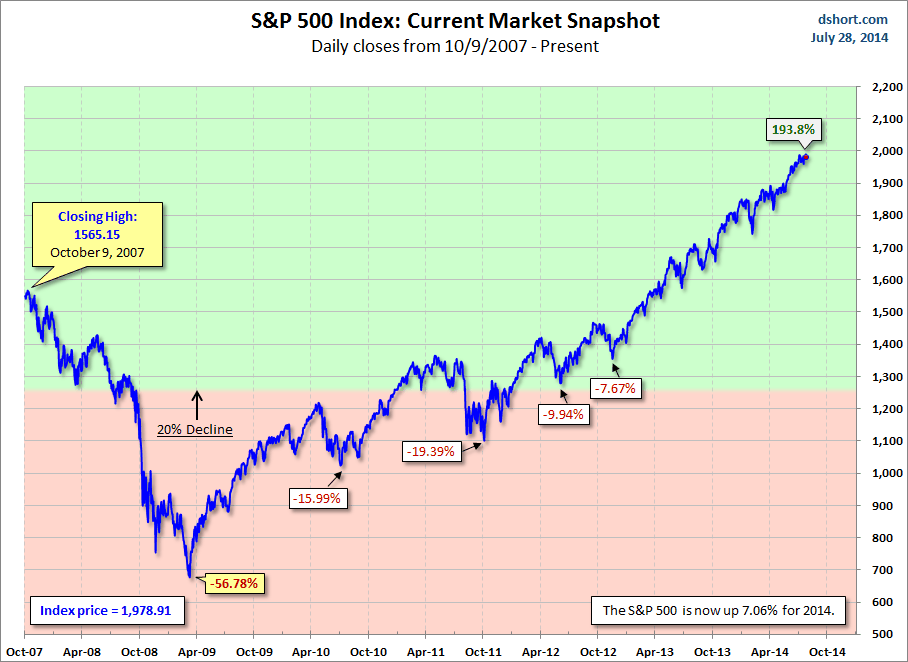
Economic and Market Update – Cause for Concern
Raymond James’ Investment Strategy Committee recently summarized its thoughts on the economy and markets…
The committee believes that growth in U.S. gross domestic product (GDP) is expected to remain in line with the consensus estimate of 3% for the second half of 2014, but with some downside risks. Inflation is expected to remain low through the remainder of the year, at or below the current rate of about 2%. The committee also anticipates long-term interest rates to rise modestly, albeit at a slower pace than in 2013, as the Federal Reserve continues with its tapering program. In terms of investment areas, committee members remain bullish on equities, while taking a cautious stance on fixed income. Source
Regarding Petrovic Financial Services’ views on the financial markets, the past few years our model portfolios have been positioned for a rising stock market but cautiously optimistic given the major headwinds (e.g. Eurozone mess, double dip recession in Europe, very slow U.S. growth, dysfunctional U.S. Congress, China debt/housing issues, etc.). Even given these major headwinds, the financial markets and particularly the U.S. stock market continued their strong upward march.
But after last year’s U.S. stock return 'melt up', we have become more cautious in our stock outlook. Historically, corporate profit margins are cyclical, and we believe they are currently at their cyclical peak. This doesn’t mean margins can’t go higher or at least remain at this evaluated level, but it concerns us.
In addition, by historical valuation measures, we believe U.S. stocks are overvalued broadly speaking. However, stocks can be over or under valued for years before the market reverses course, so knowing when to buy or sell based on valuation is very difficult. Just recall the Technology bubble and how long that took to pop.
Next, since the March 2009 S&P 500 Index low, the index has had 4 decent corrections (see chart below). Healthy long-term bull markets have periodic corrections of more than 10%, but we haven’t had many in this 5-year bull market.
Lastly, to further complicate every investor’s job, the U.S. Federal Reserve’s policy (and other sovereign banks as well) of low interest rates combined with Quantitative Easing, with its explicit goal of making investors reach for risk since cash investments pay almost nothing, has muddied the waters. Even though the U.S. Fed is ‘tapering’ its QE program, how it unwinds this program successfully and its impact on the financial markets are a big unknown for both the stock and bond markets.
Regarding our model portfolios that many of you are invested in, we haven’t reduced our stock exposure because 1) we are already somewhat defensive with our use of alternatives investments and 2) if/when the market corrects significantly, we may rotate out of the alternatives and into stocks to take advantage of a perceived market correction.
For those of you nearing or in retirement, over the years we have spoken with most of you about the importance of limiting your portfolio’s losses to help insure your savings last, and from a mental perspective the importance of trying to balance your desire for returns with prudent risk management.
As always, we continue to monitor your portfolios and investments, and do our best to inform you on the economy and markets via our newsletters and in-meeting commentary.
If you know someone who is in need of financial planning or investment advice during these interesting times, we would be happy to meet with them for a complimentary consultation.
The S&P 500 is an unmanaged index of 500 widely held stocks that is generally considered representative of the U.S. stock market. Any opinions are those of Alex Petrovic and Alex Petrovic III and not necessarily those of RJFS or Raymond James. Expressions of opinion are as of this date and are subject to change without notice.


